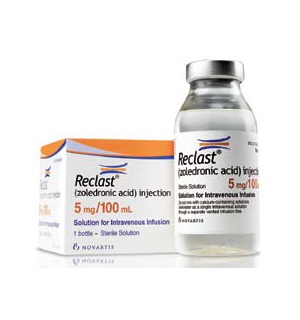Exploring Reclast: A Comprehensive Guide to Osteoporosis Treatment
Osteoporosis is a common condition that weakens bones, making them more susceptible to fractures. As we age, our bone density naturally decreases, but certain factors can accelerate this process. In this comprehensive guide, we will delve into the world of osteoporosis and shed light on an effective treatment option – Reclast.
Understanding Osteoporosis
Osteoporosis is often referred to as the “silent disease” because it progresses without noticeable symptoms until a fracture occurs. It primarily affects older adults and postmenopausal women, but men can also be at risk. Risk factors include genetics, age, gender, and lifestyle choices such as smoking and excessive alcohol consumption.
Exploring Reclast
Reclast, also known by its generic name zoledronic acid, is a prominent treatment for osteoporosis. It belongs to a class of medications called bisphosphonates, which work by slowing down bone resorption and promoting bone formation. Reclast is administered through an intravenous infusion and is typically given once a year.
Benefits and Risks
Reclast offers several benefits in the management of osteoporosis. It significantly reduces the risk of fractures, particularly in the spine and hips, which are common sites of osteoporotic fractures. By enhancing bone density and strength, Reclast helps maintain overall bone health and improves quality of life for individuals at risk.
However, like any medical treatment, Reclast comes with potential risks and side effects. Some individuals may experience flu-like symptoms, such as fever, muscle aches, and fatigue, shortly after the infusion. Rarely, serious complications like kidney problems or severe bone, joint, or muscle pain may occur. It’s essential to discuss potential benefits and risks with a healthcare professional before considering Reclast treatment.
Reclast Treatment Process
Receiving Reclast treatment involves a straightforward process. A healthcare provider administers the medication through a slow intravenous infusion, typically lasting around 15 minutes. The infusion is usually done on an outpatient basis, allowing patients to return home the same day.
Before the infusion, it’s important to inform your healthcare provider about any medical conditions, medications, or allergies you may have. During the infusion, you may experience mild discomfort or a slight cooling sensation as the medication enters your bloodstream. Following the infusion, your healthcare provider will monitor you for a short period to ensure there are no adverse reactions.
Monitoring and Follow-up
After receiving Reclast treatment, regular monitoring and follow-up appointments are crucial. Your healthcare provider will schedule bone density tests to assess the effectiveness of the treatment and track changes over time. These tests, often performed using dual-energy X-ray absorptiometry (DXA) scans, help determine whether Reclast is effectively increasing bone density and reducing fracture risk.
Lifestyle and Osteoporosis Management
While Reclast is an effective treatment for osteoporosis, it’s important to complement it with a bone-friendly lifestyle. Regular weight-bearing exercises, such as walking, jogging, and resistance training, help stimulate bone growth and maintain bone density. Adequate intake of calcium and vitamin D through a balanced diet or supplements further supports bone health.
By harnessing the power of natural language processing, we can explore tailored lifestyle recommendations. NLP-driven insights analyze individual preferences and habits, suggesting personalized exercise routines and dietary choices to maximize the benefits of Reclast.
Comparing Treatment Options
When considering osteoporosis treatment, it’s important to understand the various options available. Reclast stands out as a potent choice, but comparing it with other treatments helps you make an informed decision.
Oral Bisphosphonates:
These medications, taken in pill form, slow bone loss and reduce fracture risk. However, they may cause gastrointestinal irritation and require strict dosing instructions.
Hormone Therapy:
Estrogen therapy can help maintain bone density, but it comes with potential risks and is usually recommended for postmenopausal women experiencing menopausal symptoms.
Injectable Medications:
Injectable treatments, like denosumab, target bone resorption pathways. They require regular administration, which may be more frequent than Reclast.
Frequently Asked Questions
What is the recommended frequency for Reclast infusions?
Reclast is typically administered once a year. Your healthcare provider will determine the most suitable schedule based on your specific needs and response to treatment.
Are there any dietary restrictions before a Reclast infusion?
It’s advisable to drink plenty of fluids before the infusion to stay well-hydrated. Your healthcare provider may provide specific guidelines based on your medical history.
Can Reclast be used for men with osteoporosis?
Yes, Reclast is approved for both men and women with osteoporosis. It helps improve bone density and reduce fracture risk regardless of gender.
Are there alternatives to Reclast for osteoporosis treatment?
Yes, other treatment options include oral bisphosphonates, hormone therapy, and injectable medications. Your healthcare provider will recommend the most suitable option based on your individual health profile.
Conclusion
Reclast, a leading osteoporosis treatment, offers remarkable benefits in reducing fracture risk and improving bone density. Its unique mechanism of action and annual infusion make it a convenient option for many individuals. However, each person’s medical history and preferences are unique




